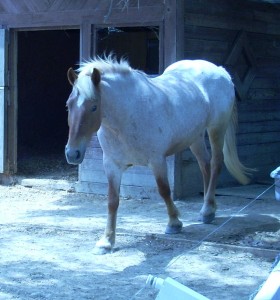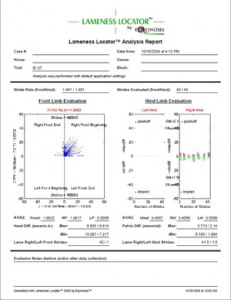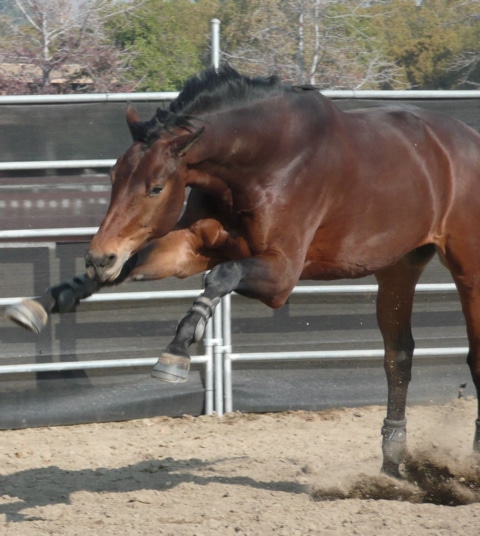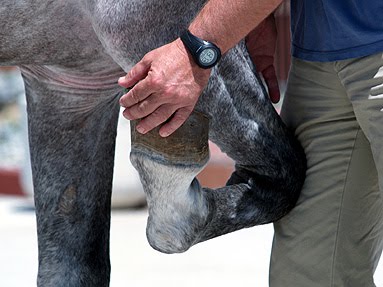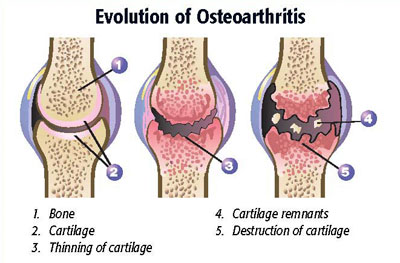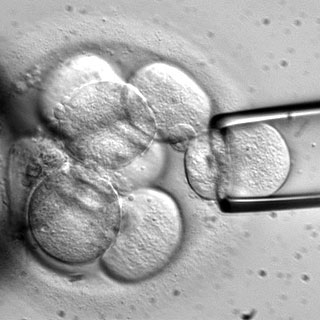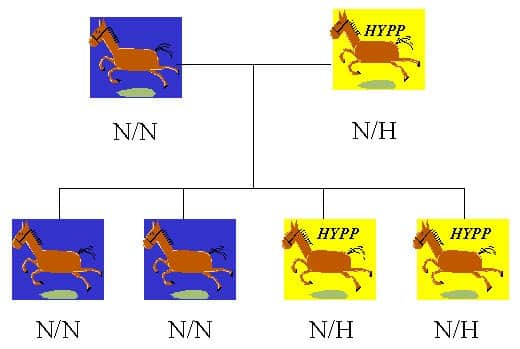I have to confess, I like objectivity. I like sports where they keep score based on things like if the horse did or did not knock down the fence, or if the goal was or was not scored. The more subjective sports, where “winning” is based on whether or not the contestant appealed to the judge’s sense of how things are supposed to be, (like, say, gymnastics, or figure skating), make me a bit nuts.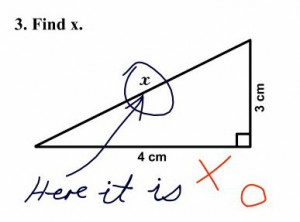
Lameness exams can run the gamut between objectivity and subjectivity. On the one hand, sometimes you have a horse that won’t put his foot on the ground. There’s a nail in the foot. Voila, objective evidence of the problem. Pull the nail, bandage the foot, and in a few days the problem is solved. Everyone is happy.
On the other hand, sometimes you have the horse that isn’t switching its leads properly, or isn’t getting round enough, or is in some way not performing up to its owner’s expectations. In these cases, invariably, owners and trainers will conclude that something is wrong with the horse. And, sometimes when I examine that horse, I can find that something is wrong, and treat accordingly.
But not always. Sometimes I trot that horse up and down and try to see where the problem is. I may flex a limb, make the horse go in circles, or do something else to try to make him show me where he’s lame, and sometimes I still can’t find much of anything at all. There might be some change after a local anesthetic block; maybe then the problem will seem to switch legs. Maybe I’ll take some X-rays, or advise a bone scan; sometimes even those tests don’t let me know what’s up. (Maybe the horse is normal, but, for some reason, some owners and trainers don’t like to be told that.) After all the time, effort, and expense, I end up scratching my head. And, to be frank, when your veterinarian is scratching his or her head, it’s not a good confidence-builder.
The thing is, when it comes to lameness, we veterinarians are mostly trying to find something objective on which to hang our diagnostic hats. We’re looking for a bobbing head, a lifting pelvis, a funny leg swing, or some other clue that something is wrong. Happily, since horses tend to be fairly predictable in the way that they move when a leg hurts (e.g., “head up on the bad leg, down on the good leg”), we can often assert, with some confidence, based on patterns of head, pelvis, and leg movement, that we know in which leg a horse is lame.
Even though that’s a fairly objective approach, the problem is that the human eye isn’t very reliable in recording and processing information. As a result, studies have shown that veterinarians tend not to be very consistent in their observations of lame horses. That is, one veterinarian may think a horse is lame in one leg, whereas another might pick another limb (or limbs) as the culprit. That happens, because, among other reasons, we measure the things that we’re looking for with our eyes.
Everyone should be willing to admit that their eyes are fallible. People see mirages, they have hallucinations, and they can be fooled by optical illusions. They can see what they want to see. And, even when they work perfectly, eyes are not nearly as good as recording optical information as are mechanical devices; that’s why you like to take pictures!
 A relative new piece of diagnostic equipment has been made available to the veterinary community. It’s called the “Lameness Locator.” It was developed by Dr. Kevin Keegan, a professor of surgery and lameness at the University of Missouri, in Columbia, MO. I think the machine has the possibility of revolutionizing lameness diagnosis, because it moves the process to more objective measurements. Essentially, the machine is a very precise way to measure the observations that we try to make anyway.
A relative new piece of diagnostic equipment has been made available to the veterinary community. It’s called the “Lameness Locator.” It was developed by Dr. Kevin Keegan, a professor of surgery and lameness at the University of Missouri, in Columbia, MO. I think the machine has the possibility of revolutionizing lameness diagnosis, because it moves the process to more objective measurements. Essentially, the machine is a very precise way to measure the observations that we try to make anyway.
It’s a very clever bit of technology, combining two accelerometers (devices that measure acceleration, in this case measuring the up and down movements of the head and pelvis), a gyroscope, (a device for measuring or maintaining orientation, in this case the orientation in space of the right fore limb), Bluetooth technology (for sending data over short distances), and a proprietary computer program to collect and analyze all of the data. These devices are muchmore accurate at recording the movements of the head, pelvis, and limb than is the human eye; the human eye is sampling about 20 times per second, whereas the Lameness Locator takes 200 samples per second.
When I uses the Lameness Locator, I mounts the sensors on the top of the head, top of the pelvis, and on the right fore pastern. The sensors search for the computer, and begin to transmit data. As the horse is trotted (in a straight line, or in a circle, or after a limb is flexed, or after an anesthetic block is placed), the computer records the movements, removes movements that aren’t consistent, such as when the horse is stopped and turned around, or if he stumbles, and then processes the information. Based on the recorded data, a horse can be shown to be lame in one – or more than one – leg, all at the same time.
It’s pretty easy to come up with potential applications. Certainly, it’s something that can be used to assist routine lameness examinations. Prepurchase examinations would seem to be a likely use; you’re worried if a horse is lame when you buy it, so why not try to be as precise as you can in seeing if he really is? And perhaps you’d like to have a record of how your horse is moving, so you can have some information for comparison at a later time, when you think that something might be wrong.
At this point, the question is not whether the Lameness Locator is a valuable tool for lameness diagnosis. It’s been tested (CLICK HERE to see the results of one important study that shows the machine is much better than is the human eye at lameness evaluation), and more testing is being done. The problem is, even if the system is good (and it is) people tend to be a bit slow adopting new information. For example, it took more than 200 years between the time that we recognized that citrus prevented scurvy, and the time that the British Navy mandated that all sailors should get lime juice. Good ideas are not always immediately recognized, or even adopted.
If you’ve got a lame horse, and you’re not entirely sure what’s going on, or if your horse hasn’t responded to treatment, putting some sensors on him to help evaluate his limb movement is something that I think you should consider. It’ll make things a bit more objective if your horse is lame. If your horse isn’t lame, you might be able to worry a bit less, and perhaps concentrate more on your riding technique). Those are good things, for you and for your horse.
I’ve got a Lameness Locator, and would be happy to use it to check out your horse – CLICK HERE TO CONTACT DR. RAMEY


